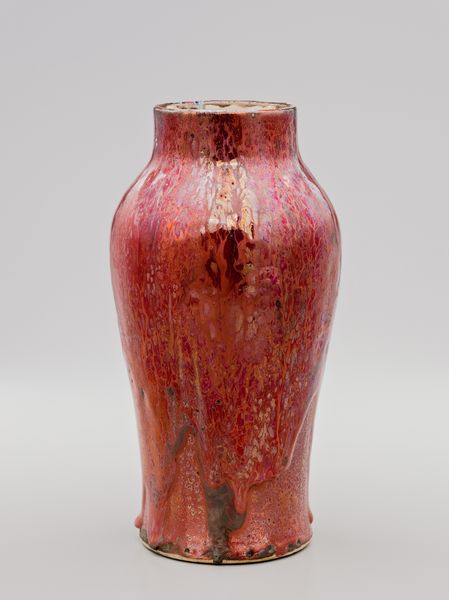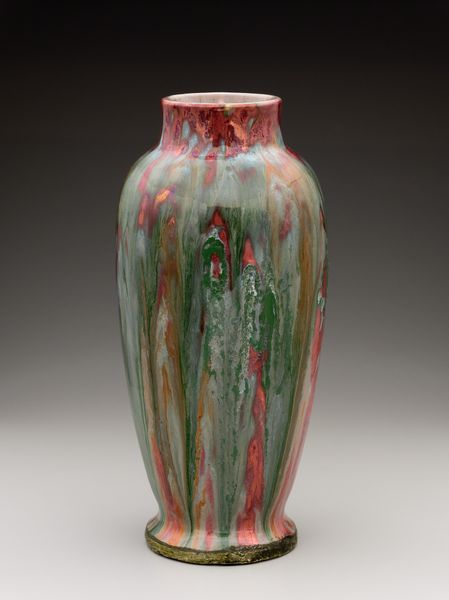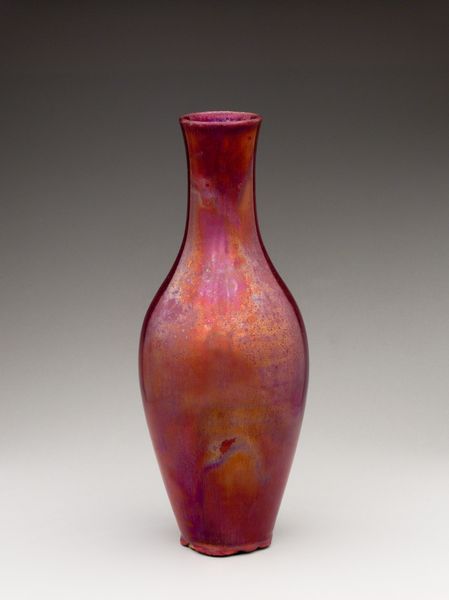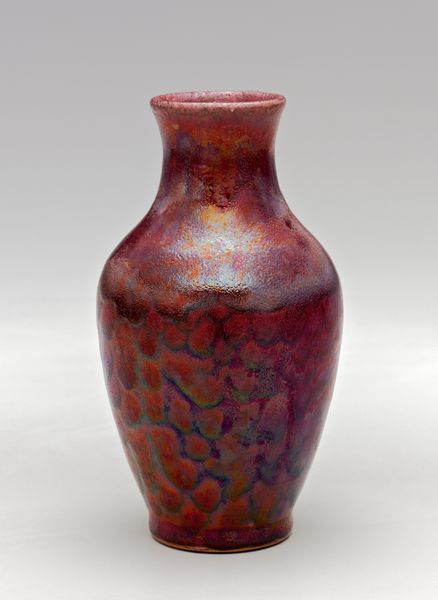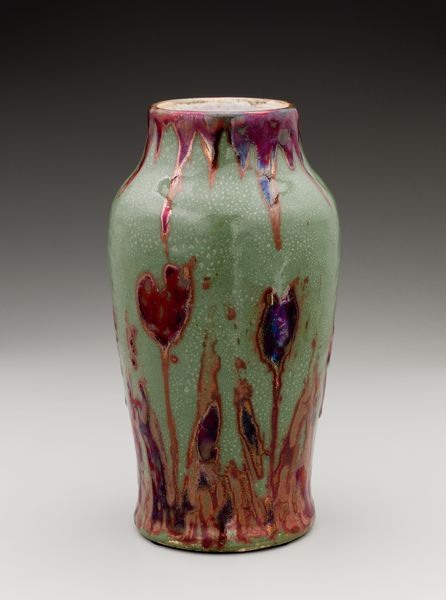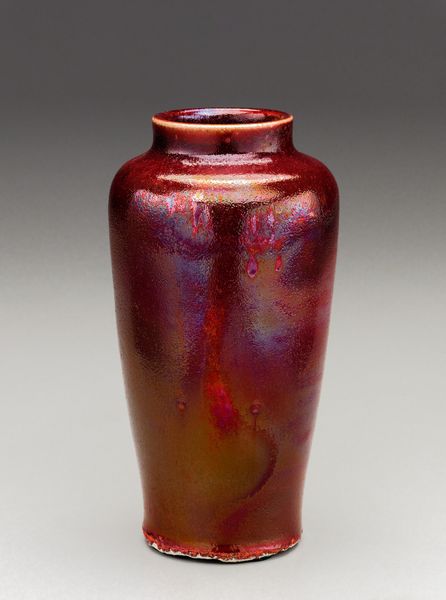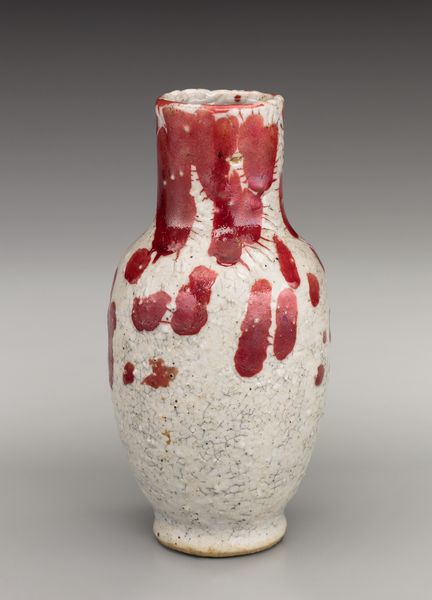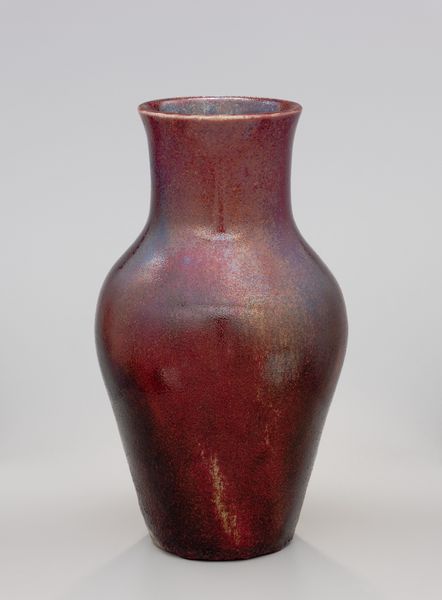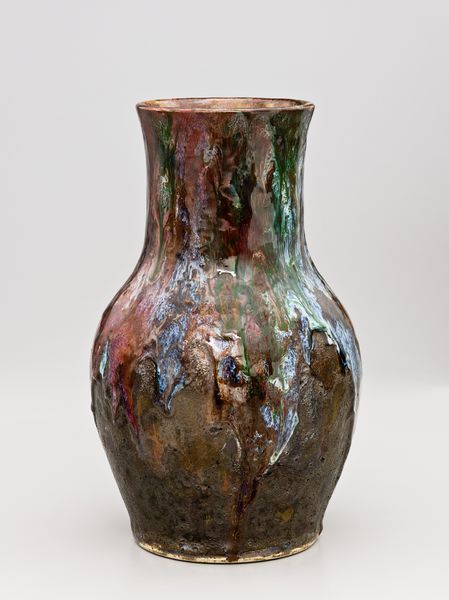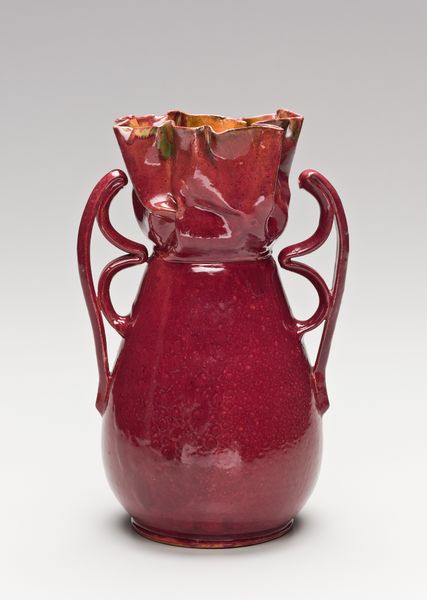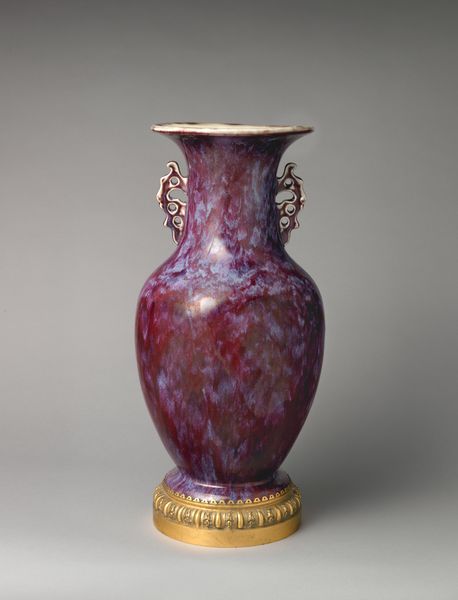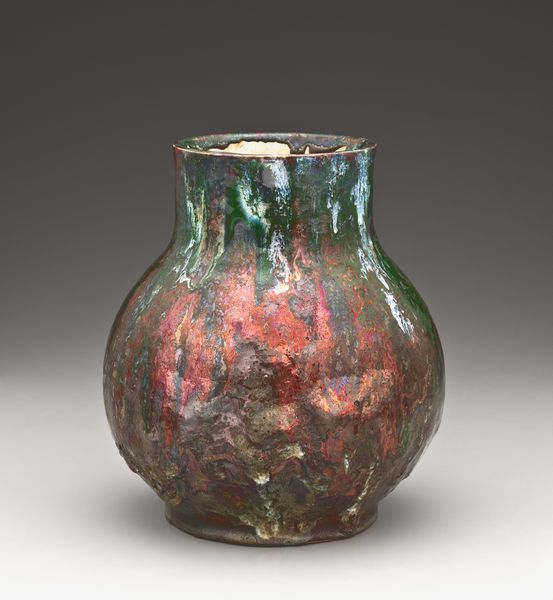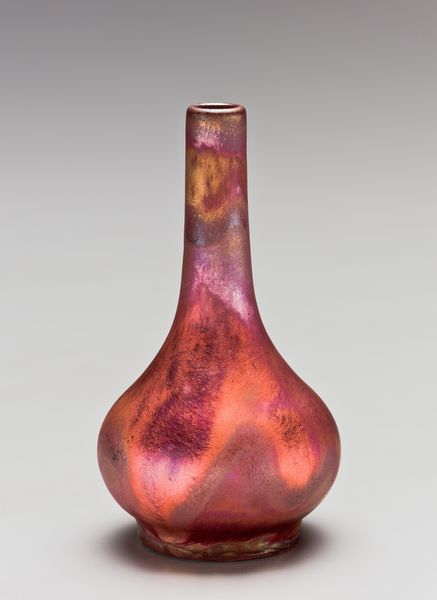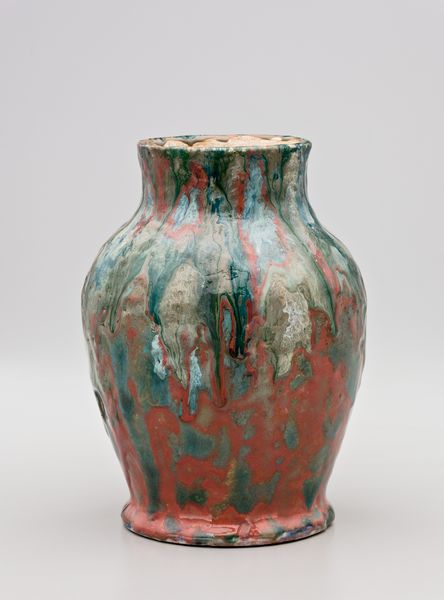
ceramic, earthenware, sculpture
#
ceramic
#
earthenware
#
stoneware
#
sculpture
#
ceramic
#
decorative-art
Dimensions: 8 1/4 in. × 6 in. × 4 in. (21 × 15.2 × 10.2 cm)
Copyright: Public Domain
Editor: Here we have a ceramic earthenware vase by William J. Walley, created sometime between 1895 and 1921. The glaze is… certainly something. It has this melting, almost distressed look. What stands out to you? Curator: The most striking aspect is the intentionality of the glaze and its production. Instead of disguising the process, the artist foregrounds the material transformation and the role of labor involved. Note how the drips and runs aren't just accidents but carefully orchestrated. What does this elevation of a utilitarian object to a work of art tell us about consumption and taste at the turn of the century? Editor: So, it's less about the vase's function and more about making us think about how it was made? The kind of clay, maybe where the materials were sourced? Curator: Precisely! Consider also that this was made during a period of industrial expansion. Studio pottery provided a reaction to mass production. The handmade vase offers unique insight into the tensions between mechanized production and craft. It allows us to consider not only the final form, but also the conditions of its making, from mining of the clay to the potter's physical effort. Editor: I never thought about ceramics in terms of labor like that, so the artist is making a statement by drawing attention to the amount of physical exertion and natural resources to simply create a vase. Curator: And the aesthetic value we ascribe to such objects. Is it about rarity, the maker's skill, or perhaps something more inherent in the materials themselves? What happens when we shift focus from decoration to production? Editor: That’s a total reframe for me. Seeing it as more about process really makes it feel more relevant to larger cultural narratives and the role of making something. Curator: Absolutely. The ‘Vase’ then becomes less a vessel and more of a testament to material agency and artistic labor.
Comments
No comments
Be the first to comment and join the conversation on the ultimate creative platform.
